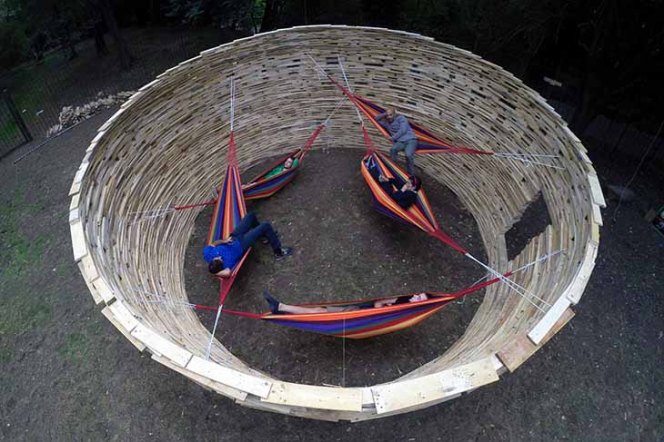Your Cart is Empty
Customer Testimonials
-
"Great customer service. The folks at Novedge were super helpful in navigating a somewhat complicated order including software upgrades and serial numbers in various stages of inactivity. They were friendly and helpful throughout the process.."
Ruben Ruckmark
"Quick & very helpful. We have been using Novedge for years and are very happy with their quick service when we need to make a purchase and excellent support resolving any issues."
Will Woodson
"Scott is the best. He reminds me about subscriptions dates, guides me in the correct direction for updates. He always responds promptly to me. He is literally the reason I continue to work with Novedge and will do so in the future."
Edward Mchugh
"Calvin Lok is “the man”. After my purchase of Sketchup 2021, he called me and provided step-by-step instructions to ease me through difficulties I was having with the setup of my new software."
Mike Borzage
The Edge: Marek Stoklosa, Architecture of Straw Bales and Steel.
June 30, 2016 9 min read
Novedge: Tell us a little bit about yourself and what you do. 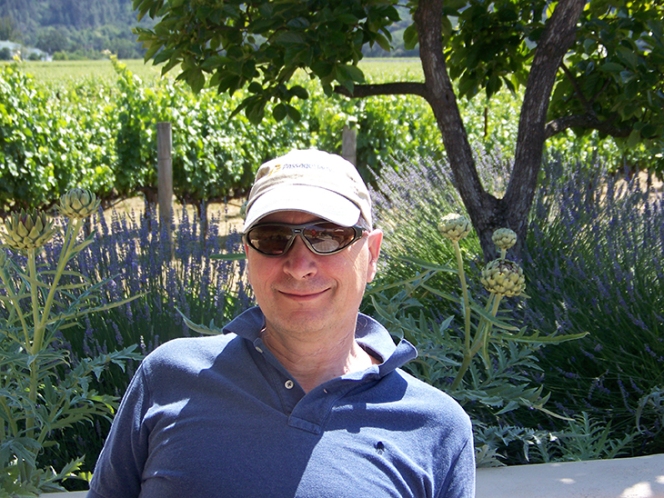 Marek Stoklosa: My name is Marek Stoklosa (with a silent "e") and I am an Architect. I practice in my own firm Mark Stoklosa Architect, Inc., located in San Jose, California. My office is like an oasis in the middle of a big city, surrounded by a bamboo forest with trees reaching as high as 60 feet, with a pond next to a cool shimmering waterfall where koi fish frolic. I began my practice in 1982. Through all these years I have been fortunate enough to have had a great number of clients, nationally and internationally, who have liked my Designs and often returned for new projects. I would like to use this interview to share some of my work and philosophy, which guides my Design creations. Among them, my very own "Green Building Technology " that utilizes Rice Straw Bales and Recycled Steel.
Marek Stoklosa: My name is Marek Stoklosa (with a silent "e") and I am an Architect. I practice in my own firm Mark Stoklosa Architect, Inc., located in San Jose, California. My office is like an oasis in the middle of a big city, surrounded by a bamboo forest with trees reaching as high as 60 feet, with a pond next to a cool shimmering waterfall where koi fish frolic. I began my practice in 1982. Through all these years I have been fortunate enough to have had a great number of clients, nationally and internationally, who have liked my Designs and often returned for new projects. I would like to use this interview to share some of my work and philosophy, which guides my Design creations. Among them, my very own "Green Building Technology " that utilizes Rice Straw Bales and Recycled Steel.
Novedge: What is your approach to Green Architecture and Sustainability?
Marek Stoklosa: Sustainability intrigued me since college, when in 1976 I participated in an international competition sponsored by McGill University in Canada. The competition purpose was to explore forward thinking ideas on Green Architecture. The solution focused on an entire Eco Village – with sustainable way of life for buildings, agriculture and livestock. The Project sparked an interest to always seek and incorporate sustainable elements in site design, orientation to the sun and energy saving methodologies. Fast forward, in 1995, a non profit organization in Livermore, California (AID Employment, led by Mr. Gordon Burkhart-Schultz) asked me to design a green building complex for developmentally disabled people. Client’s request was that the Design solution had to feel good and had to use a totally new Green Methodology. My client's father, Karl Schultz, Ph.D sociologist, was setting work environments at Simpson Strong Tie company, and toying with Adobe Soil and Straw Bales as building components……The idea blossomed. Gordon and I ventured on a journey through the South West to visit locations in California, Arizona and New Mexico and see what Straw Bale enthusiasts did with this interesting medium. We soon found out that none of those residential solutions from rural areas, would work in any seismically active urban area of California. I followed up on that discovery by doing a ton of reading on history of straw use in building and its suitability for construction. With that knowledge, I turned to the drawing board. My idea was to combine Rice Straw Bales and Recycled Steel. Straw Bale gave me a volume of old world charm, thick walls and tremendous insulating value of R-54. Metal structure satisfied Seismic resistivity in California. It would take volumes to write about how the project got approved. You have to keep in mind that all this happened before buzz words like Sustainability or Green Building became common or known. Opposition was fierce. Federal Agencies such as HUDwere not too keen on the idea; the city initially looked at us as Martians, the neighborhood feared fires and contractors lamented that we would put framing business out of business. Presenting the City Building Commission with a sensible solution satisfied current codes and allowed us to build. The project was completed in 1997 and it was a success. HUD announced it was the best project that year. Media articles followed.
Novedge: We are very intrigued by your choice of materials in the quest for sustainability. How do you chose them and why are they so important?
Marek Stoklosa:
Rice Straw Bale:
I am chuckling… your question brings in the story of three piglets or something like that as related to straw…I heard about it over and over from so many people… Why Rice Straw Bale?Rice is a second largest Cereal in the World. Pretty cool, isn’t it? Nobody knows that. As long as people exist, they will consume rice. Rice fields create wetlands-good for the environment. Rice straw is mostly silica, therefore it does not deteriorate in moist conditions. It is not a happy meal for bugs like termites. In baled form it is very sturdy. It can not be used as feed for livestock (remember the high silica content? ). A Rice Straw Bale will not burn in baled condition (when tested in Canada, the bale begun smoldering its loose strands in exposed form only after two hours of constant applying of flame). It has a measured insulation value of R-54 and deadens the sound almost to a 100%. California and other states forbid burning straw…so what is the farmer to do with all that stuff? Well we found a solution: put it in your building envelopes! And your walls will be thick (think about it when you have sushi or a bowl of rice with your next meal). The Client wants old world charm thick walls? Straw bales will produce that inexpensively. My Client and I have established contacts with Rice Growers and got the Straw Bales from them. They were super happy to supply as many we needed hoping for more construction.The cost was really reasonable. Here some statistics: the number one producers of rice in the world are India and China, Brazil comes in second place and the US are number three. Number one in Europe is Italy. Other types of straws are not suitable for construction since they deteriorate in time, may form fungus, are edible by vermin and are not resistant to moisture. 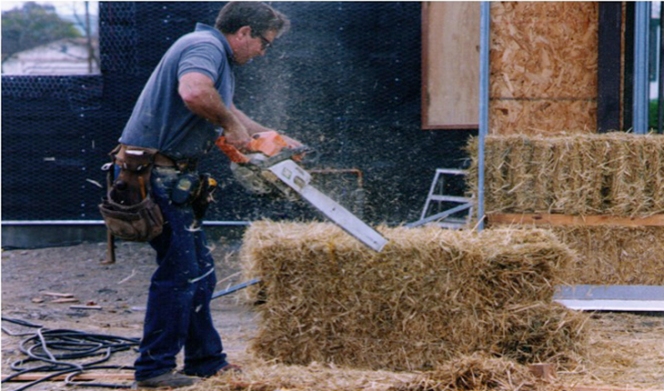 Recycled Steel:
Recycled Steel:
You are probably thinking: where can we get recycled steel? Or….. is the steel Green? Did you know that all steel in the USA used for construction is recycled? Yes, all steel used in construction in the USA is recycled. Recycling steel is infinite as a process and it saves enough energy a year to power 18 million homes. Not too shabby! Do you know that it takes 4 cars to frame an average house? Yes it does. So use the Steel. What does the steel provide? Steel is a structural and framing component for the building that pretty much never deteriorates, specially in its galvanized form. Bugs can't chew on it and it does not decay over time like wood. It is not flammable, it is always straight, it is strong and flexible and, at the same time, able to resist seismic loads. It is light weight as opposed to wood. It is also easy to install, right off the shelves…… every Architect knows that already. In the 21st century we need to be pragmatic about our solutions and stay with the times. An additional motivation to use Rice Straw Bales and Recycled Steel is to create lasting neighborhoods rather the transient neighborhood. Wood frames have a limited life span and cause constant changes to look of vast areas, changes to neighborhood culture, history etc. Creating continuity of a neighborhood preserves history and identity. All of us gush visiting the old world, so we should strive to create same lasting environment for future generations. 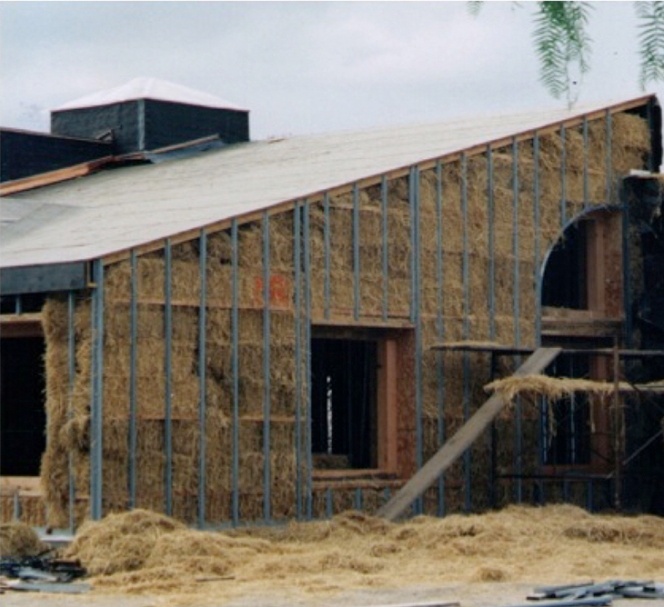 Novedge: Can you talk about a project where you employed these materials and techniques?
Novedge: Can you talk about a project where you employed these materials and techniques?
Marek Stoklosa: To date I have designed three projects using this system. Two of them have seen completion. Arroyo Commons-Housing for Humans for AID Employment is a 12 unit Housing for Developmentally Disabled People. Through this project, Gordon-Burkhart-Schultz (the client) and I became great friends. The second one (2001) is a 4,000 square foot private residence for Robert and Lily Joe in Walnut Creek, California. The Joes (founders of Eco-house 2001) have been fabulous clients and enthusiasts of Straw Bale Construction . In both projects I have used structural steel and light weight framing steel with three string Rice Straw Bales. In the first project Federal Guideline required HVAC in each unit, which was hardly ever used (even though summers get pretty hot in Livermore). To give you an idea: when we were nearing the end of construction, during the day, the outside temperature was 110F; the temperature inside, with doors open, was 73F . On Bob and Lily Joe's two story home the monthly energy bill is around $50.00. They have hydronic heating for winters and most likely never use it anyway. What sets my system apart from others is that it is readily permitted in any urban jurisdiction of seismically active California. When submitting plans for reviews I openly state I use Rice Bales in walls and have no resistance or arguments from jurisdictions. My bales are separated from wall coverings (that can be just of any kind) keeping the straw bale dry. The same separation is also necessary for interiors, in order to allow for electrical/plumbing lines. Placing bales in roofs is possible, although it is not advisable due to bale weight and roof assembly performance criteria. It is probably more practical to use other recycled forms of insulation, performing much better while reducing structural support sizes. Currently I am working on another Project in Livermore, California: a Winery/Wellness Center and B&B where all buildings will be built with the use of Rice Straw Bales/Recycled Steel. It is really a cool project. We have another Large Scale Project in works, which possibly may become a Rice Straw Bale/ Steel based venture as well. 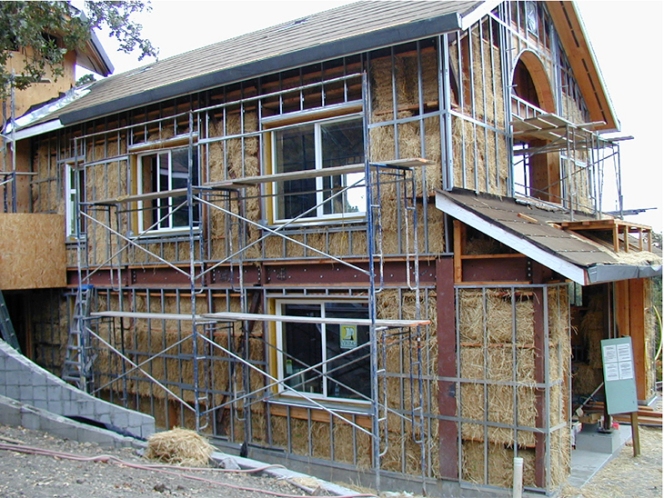
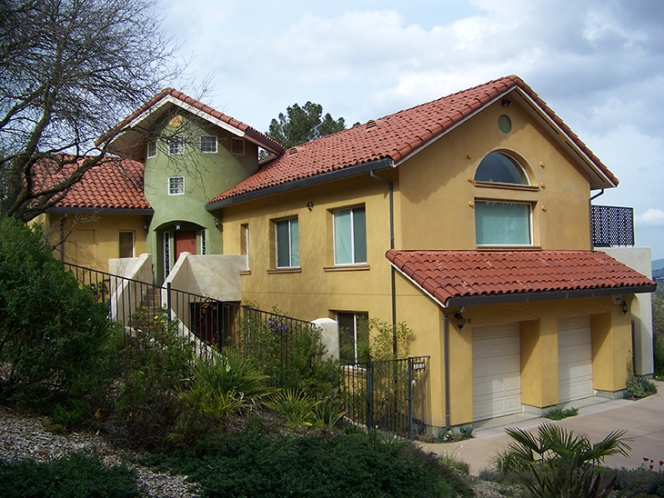 Novedge: How do you feel about technology and what kind of software do you use?
Novedge: How do you feel about technology and what kind of software do you use?
Marek Stoklosa: I am a technology “junkie”. I am an Apple guy. Hello Apple geeks out there! My tech guy is one of the top Apple execs. In addition, my electrical engineer son writes programs and apps for i-Phone keeping me on top of things. My office has all Apple equipment, the newest, with i7 quad core chips, solid state hard drives, 4 Gigs of Video Ram and 32 gigs of RAM. My Architectural Design software of choice is Vectorworks Architect with Renderworks. I do everything on it including my business card design  No more sketch paper: all the Design is done on Vectorworks. I am maintaining as well a subscription to ArchiCAD and continue learning it. I toyed with the idea of switching to it, but once 2016 Vectorworks came out sticking with Vectorworks made more sense. I consider myself a friend of Mat Panzer who inspires me to make a better use of Vectorworks. He is a fellow drummer whose Camera Matchsoftware was purchased recently by Vectorworks. I can say that Vectorworks won my heart and I continue learning and exploring. Jonathan Pickupis my mentor and I learn constantly a lot from him. The more you know, the more you realize how much you do not know. Working in this program became my hobby. For some reason I also keep a Revit subscription… I am good at it but using parallels makes me cringe and still this non Architect friendly style…… We have a wide format printer and a bunch of other stuff. To make it even more wonderful we got a Rock Band stage in the middle of the office so if you get tired working, you can play some tunes or hang out by the koi pond. Clients just love it…
No more sketch paper: all the Design is done on Vectorworks. I am maintaining as well a subscription to ArchiCAD and continue learning it. I toyed with the idea of switching to it, but once 2016 Vectorworks came out sticking with Vectorworks made more sense. I consider myself a friend of Mat Panzer who inspires me to make a better use of Vectorworks. He is a fellow drummer whose Camera Matchsoftware was purchased recently by Vectorworks. I can say that Vectorworks won my heart and I continue learning and exploring. Jonathan Pickupis my mentor and I learn constantly a lot from him. The more you know, the more you realize how much you do not know. Working in this program became my hobby. For some reason I also keep a Revit subscription… I am good at it but using parallels makes me cringe and still this non Architect friendly style…… We have a wide format printer and a bunch of other stuff. To make it even more wonderful we got a Rock Band stage in the middle of the office so if you get tired working, you can play some tunes or hang out by the koi pond. Clients just love it…
Novedge: What do you offer your customers that sets you apart from the competition?
Marek Stoklosa: I do not have customers since my work is not a commodity, I have clients. Maybe I should list the features that set my firm apart:
1. On going Communication.
2. Boutique style Practice.
3. Extensive use of IPD (Integrated Project Delivery). Before we do any work.
4. Education for Clients.
5. Specialty – a) Pre-Schools, b) Rice Straw Bale and Steel Construction.
The specialty really propelled my practice. As soon as people see you as an expert in something, then other type of work comes in. I count my blessings where my clients are concerned, these clients often become my friends and this is something lasting beyond work… something I truly cherish.
Novedge: What skills have you learned in life that are now serving you the best?
Marek Stoklosa: This is an interesting subject. Never really thought too much about it, but lets explore:
America is my adopted Country. I knew, out of the gate that opportunities would not drop into my lap but also knew that I was free to chart my own way and create my own opportunities, clientele and friends. Early in my practice I realized that I could draw free hand 3D upside down, meaning I was able to draw for my client standing on the other side of the table. The one line perspectives with soft pencil or marker, a smidgen of shading here or there, water reflection, a mood of the space… a quick solution to reflect my clients
words/wishes/dreams or my idea . That would become a conversation point and there would be dozens of these sketches during a meeting. Clients were amazed… my solutions were clear to them. People do not relate to floor plans or elevations but their eyes devour 3Ds. In the nineties I teamed up with a developer who would pay me to meet with potential clients of his, and I would draw upside down possible 3d solutions of buildings, as the conversation was happening. We would get every job, every time. I still continue drawing like that. Using a computer helps for presentations, but cannot compete with this first face to face meeting – it is amazing. These upside down sketches have been mentioned in conversations at social gatherings. Another thing that changed my work took place in 1999, when I moved from pencil on paper plan preparation, straight to BIM and Vectorworks. That was very impressive in those days. It also gave me the feeling of being ahead of everybody who was still struggling with “dumb lines” in CAD. I may be harsh but well… that is a fact.
Novedge: What's your Design dream, what would you like to design and you didn't get a chance to design yet…?
Marek Stoklosa: A question like this brings an avalanche of design thoughts/wants…I was fortunate to have an opportunity to Design many different building types…Well I was once asked to design a High-End Hotel-Scuba Resort at the Sea of Cortez, where the entire structure would be pretty much submerged and windows would be under the water. That way all guests could see aquatic life below, from their rooms, restaurants, gyms, shops, etc. My Canadian Clients could not reach an agreement with the local entities and the project was shelved. I still would like to design that type of a project one day-may be combining it with Straw Bales???:).
We hope this ingenious use of resources will be trending soon. With the right idea and the right CAD you can really make a house "Wolfproof"! To find out more about Marek 's Green Building Technology, visit his website. For all your Design tools and best deals on the entire Vectorworks product line, visit Novedge.
Related articles
Also in NOVEDGE Blog

Enhance Your Designs with VisualARQ 3: Effortless Geometry Extensions for Walls and Columns
April 30, 2025 8 min read
Read More
MecSoft Unveils RhinoCAM 2025 and VisualCAD/CAM 2025 with Enhanced Features
March 08, 2025 5 min read
Read MoreSubscribe
Sign up to get the latest on sales, new releases and more …



